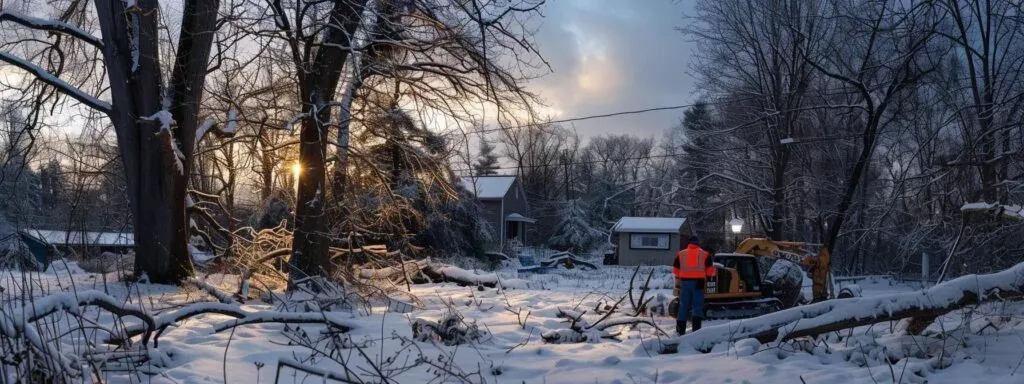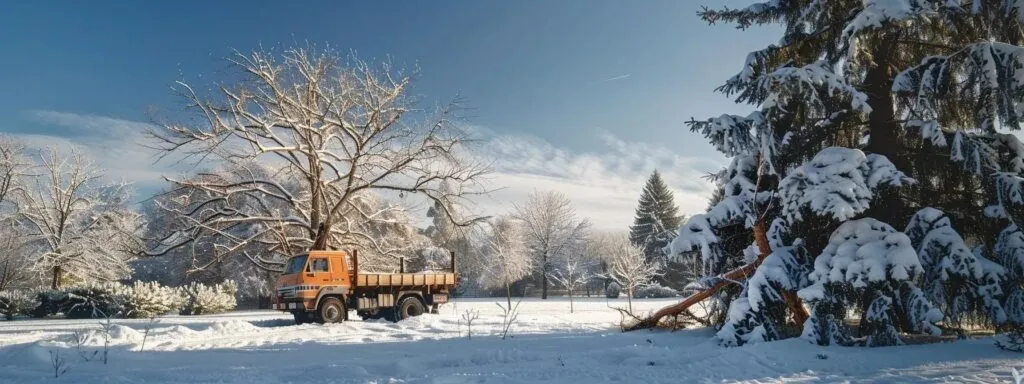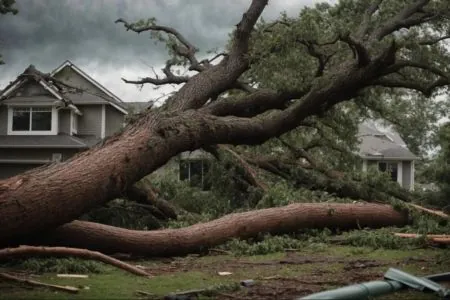Tree removal is, at times, essential for homeowners, and while it is a very complicated and involved task, it does not have to break the bank. Understanding the best time of year to cut down trees can help you save money while ensuring your property stays safe and well-maintained. Knowing when to schedule your service can lead to significant savings if you need tree trimming, tree removal service, or any other tree work.
Why Timing Matters in Tree Removal Costs

The timing of your tree removal can significantly impact the overall cost of the service. Tree service companies often experience fluctuating demand depending on the season. Scheduling your tree removal service during off-peak seasons, like winter or early spring, can help you secure more affordable rates while avoiding long wait times. It is also important to remember the overall health of the tree also can impact removal costs. Trees well-trimmed and maintained are easier to take down than large, overgrown trees. Trimming and upkeep ad the overall health of the tree can have an impact on tree removal costs along with the following key factors:
The Role of Seasonal Demand
The timing of your tree removal can significantly impact its cost. During peak seasons like spring and summer, tree service companies such as Tree Service Quincy often face high demand, as many homeowners schedule tree work when the weather is warmer. This increased demand can increase prices, as companies may be fully booked. To save money on your tree removal service, consider scheduling during the off-peak months, such as late fall or winter, when demand is lower and prices are more affordable.
Weather Considerations
Weather plays a crucial role in tree removal costs. During colder months, ground conditions may be difficult for tree removal crews, and snow or ice can make the job more complicated and time-consuming. However, in milder seasons like late winter, when trees are dormant, tree service providers are less busy and can often offer lower rates. By planning your tree removal during these cooler but manageable months, you can ensure both safety and cost-effectiveness while avoiding delays caused by extreme weather.
When is the Cheapest Time for Tree Removal?

Winter is generally considered the cheapest time of year for tree removal. During the colder months, tree service providers, including those offering tree removal service in Quincy, often have fewer clients, which leads to lower rates. If you are looking for the most affordable tree removal, scheduling during late winter can help you avoid the higher prices typically seen during peak seasons like spring and summer.
Why Winter Is the Most Affordable Season
Winter is often the cheapest time of year for tree removal, especially for homeowners looking for the cheapest tree removal options. Tree service companies tend to have fewer customers during winter, resulting in lower prices. Moreover, trees are dormant in winter, making it easier and safer for professionals to perform tree work. With less demand and favorable conditions, winter presents an excellent opportunity to schedule your tree removal service at a more budget-friendly rate while still getting high-quality results.
Late Winter vs. Early Spring: Finding the Sweet Spot
Late winter can be the sweet spot for scheduling tree removal if you are looking to balance cost savings with favorable weather conditions. While early spring is the busy season for tree trimming and other tree services, late winter offers lower rates as tree services are still in a lull. By booking your tree removal service during this time, you can secure affordable pricing before the spring rush, ensuring you get the best deal without compromising quality or service. Find your sweet spot and call the local tree pros today.
Cost-saving tips for Tree Removal

To save on tree removal costs, consider combining services like tree trimming or stump grinding with your removal. Many tree removal service companies offer discounted rates for bundled services. Additionally, booking your tree work in advance, especially during the off-season, can help you secure the cheapest tree removal prices.
Combine Services
One effective way to save on tree removal is by combining multiple services. If you need tree trimming, removal, or stump grinding, ask your tree service provider if they offer package deals. Many companies provide discounts when you bundle services together, making it cost-efficient to address all your tree work at once. Instead of scheduling multiple appointments, bundling services can help streamline the process while ensuring you get the best value for your investment in tree care.
Plan Ahead
Planning ahead is a smart strategy for saving money on tree removal. Scheduling your tree work during off-peak seasons, or at least a few weeks in advance, allows you to secure a lower rate. Tree service companies tend to charge more during busy times, especially in the spring and summer, when demand for services like tree trimming and removal peaks. By booking early, you avoid higher emergency fees and give yourself more flexibility in choosing a cost-effective service date that fits your needs.
Get Multiple Quotes
Do not settle for the first quote you receive when it comes to tree removal. Getting multiple quotes from different tree service providers is always a good idea. This allows you to compare prices, services, and each company’s overall reputation. Whether you need tree trimming, complete tree removal, or other tree work, having several quotes helps you find the best deal and avoid overpaying. Take the time to research and ensure that you are getting both quality and affordability in your tree removal service.
When to Remove Trees Beyond Cost Considerations

While timing your tree removal service for cost savings is essential, tree health and safety should always come first. If a tree is diseased or poses a risk to your home, it is crucial to address it immediately. Prioritizing safety over cost will ultimately save you from future damage and expenses.
Addressing Tree Health and Safety
While delaying tree removal is tempting for cost savings, tree health and safety should always come first. A diseased, dying, or unstable tree can pose significant risks to your home and property, leading to costly damage. In these situations, postponing removal, regardless of the season, is not worth the risk. Ensuring your trees’ health and property’s safety should be a top priority when making tree care decisions.
Planning Around Landscaping Goals
When planning for tree removal, it is essential to consider how it fits into your broader landscaping goals. Removing trees at the right time can help create the space you envision if you are redesigning your yard or adding new plants. Think about how tree removal will impact the overall aesthetic of your outdoor area, and align your tree work with upcoming landscaping projects to ensure a cohesive, well-planned design.
Considering Local Regulations and Permits
Before scheduling tree removal, it is important to consider any local regulations or permits that may be required. Many areas have specific rules regarding tree removal, especially if the tree is in a protected zone or is of a certain size. Check with your local government or tree service company in Quincy to understand any necessary permits, as failing to comply could lead to fines or delays in your tree removal process.
Find the Right Tree Service Company
Finding a reliable arborist ensures a smooth and affordable experience. Look for a reputable company that offers the services you need, such as tree trimming or removal, and has a history of excellent customer service. If you are in Quincy or the surrounding areas, research local tree removal services and read customer reviews to make sure you are choosing the right professional for your tree work. Contact your trusted tree removal service today to schedule affordable winter tree removal.
Frequently Ask Questions
Q: Is it cheaper to remove trees in winter?
A: Yes, winter is typically the cheapest time for tree removal. Demand for tree services is lower during the colder months, leading to reduced rates. Additionally, trees are dormant in winter, making removal easier and often more affordable.
Q: What is the best month to cut down a tree?
A: Late winter, such as February or early March, is often the best time to cut down a tree. Tree service companies are less busy, and weather conditions are more favorable than in mid-winter.
Q: How much should I expect to pay for tree removal?
A: Tree removal costs vary depending on tree size, location, and complexity. On average, prices range from $200 to $2,000. You can save money by scheduling removal during off-peak months like winter or bundling services such as stump grinding.
Q: How can I save money on tree removal?
A: To save on tree removal costs:
- Schedule services during off-peak seasons like winter.
- Combine tree removal with other services such as trimming or stump grinding.
- Get multiple quotes to compare prices and services.
Q: Can you negotiate tree removal?
A: Yes, many tree service providers are open to negotiation, especially if you schedule during their slow season or bundle multiple services. Always request a detailed estimate and discuss your budget with the provider.





